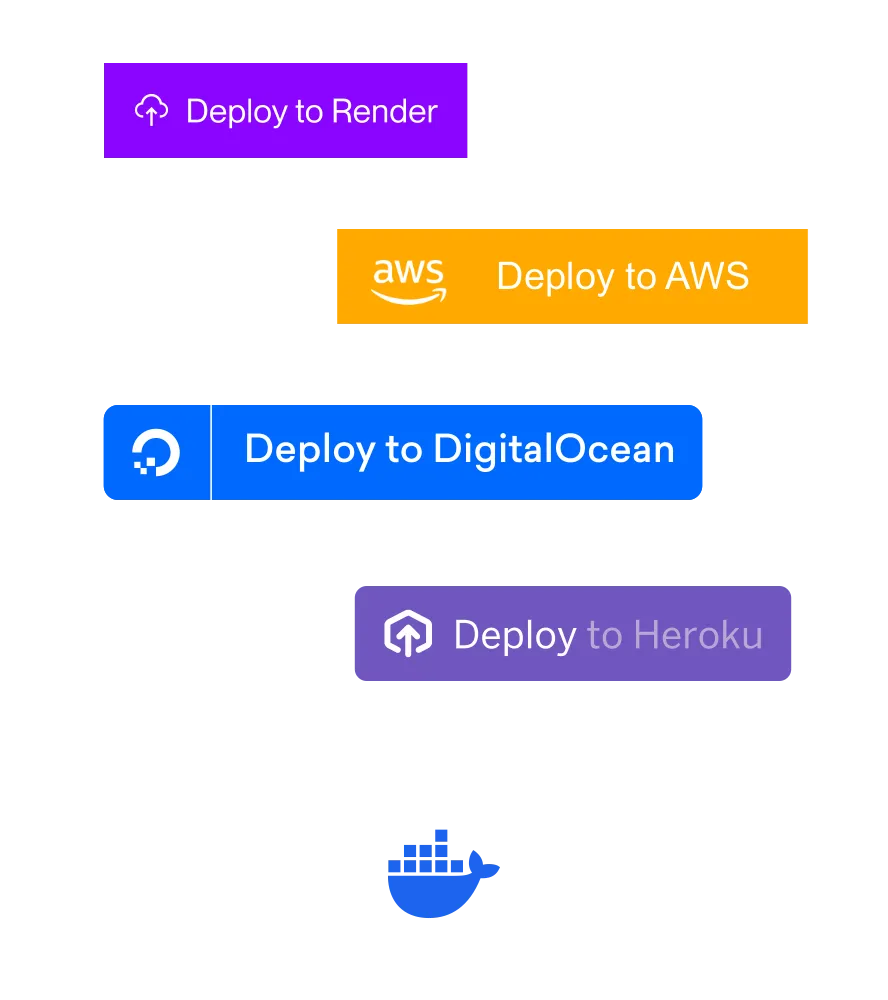Deploy MCP Servers Without the Hassle
Skip the complex setup and deploy your MCP servers instantly.
Featured from Catalog
Stars
2.777Deployments
940
Stars
15.861Deployments
197
Deploy faster
Everything you need to deploy your MCP-Server
One-click MCP deployment
Deploy any MCP server to production instantly. We handle the complex setup, credentials, and multi-cloud deployment so your AI agents can connect to the tools they need.

Save Time
Deploy MCP servers across any cloud provider without writing infrastructure code or managing complex configurations.

Automation
Sign in once to save your MCP server configurations and deploy them whenever needed. No complex setup - just authenticate and deploy.

Open Source
Our platform runs on an open-source code which you can extend and use freely
import cloudFormationParserInstance from './parsers/aws-cloudformation'; import renderParserInstance from './parsers/render'; import { BaseParser, ParserInfo, TemplateFormat } from './parsers/base-parser'; function translate(dockerComposeContent: string, targetPlatform: string, templateFormat?: TemplateFormat): any { try { const dockerCompose = YAML.parse(dockerComposeContent) as any; const parser = parsers.find(parser => parser.getInfo().abbreviation.toLowerCase() === targetPlatform.toLowerCase()); if (!parser) { throw new Error(`Unsupported target platform: ${targetPlatform}`); } const translatedConfig = parser.parse(dockerCompose, templateFormat); return translatedConfig; } catch (e) { console.error(`Error translating docker-compose content: ${e}`); return null; } }
Frequently asked questions
- What is DeployStack?
DeployStack is a deployment platform that simplifies cloud deployments without the technical hassle. Our primary focus is MCP (Model Context Protocol) Server deployment - allowing you to deploy MCP servers to any cloud provider with one click, including credential management and team collaboration features. We also offer Docker-to-Infrastructure as Code conversion, automatically generating templates for AWS CloudFormation, Render.com, and DigitalOcean from your Docker configurations.
- How does DeployStack work?
DeployStack works in two ways: For MCP Servers, simply submit your MCP server to our catalog at deploystack.io/mcp, and users can deploy it to any cloud provider (Render.com, Fly.io, AWS) with one click - we handle the setup, credentials, and deployment automatically. For Docker applications, provide the URL of your GitHub repository containing a Docker Compose file or docker run command, and our service generates corresponding Infrastructure as Code templates that you and your users can deploy to your preferred cloud platform.
- Is DeployStack Open Source?
Yes, DeployStack is entirely free to use for public GitHub repositories. We don't support private repositories yet. You can check our GitHub organization with our open-source modules and templates at https://github.com/deploystackio
- What IaC templates does DeployStack support for docker?
Currently, DeployStack supports generating IaC templates for AWS CloudFormation, Render.com, and DigitalOcean. You can also add a cloud provider by contributing to our docker-to-iac module.









